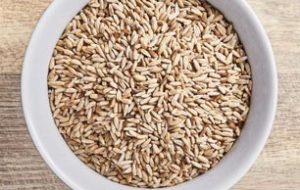
CORN
Corn, also known as maize, is a starchy vegetable that comes as kernels on a cob, covered by a
husk. Corn is one of the most popular vegetables in the U.S. that sometimes gets a bad rap
because it has a lot of natural sugar and carbs. But don’t overlook the health benefits of this
versatile veggie.
Corn is a favorite of summertime cookouts. Popped, it makes the perfect snack for movie nights
or parties. Dried and ground into flour, its seeds become cornmeal for tortillas, chips, and
crackers. In this form, it’s a grain, not a vegetable.
Farmers in southern Mexico first
cultivated corn about 10,000 years ago from a wild grass called teosinte. Teosinte kernels were
much smaller than modern corn kernels. As farmers carefully chose which corn seeds they
replanted, corn evolved into the version you know today.
Natives of North and South America grew corn, which they called maize. Europeans who came to New
England learned about it and brought it back to their home countries. The pilgrims of Plymouth
Colony and members of the Wampanoag Tribe probably ate corn at the first Thanksgiving dinner

OATS
Oats are an incredibly nutritious food packed with important vitamins, minerals and antioxidants. In addition, they’re high in fiber and protein compared to other grains. Oats contain some unique components — in particular, the soluble fiber beta-glucan and antioxidants called avenanthramides

RYE
Rye (Secale cereale) is a grass grown extensively as a grain, a cover crop and a forage crop. It is a member of the wheat tribe (Triticeae) and is closely related to both wheat (Triticum) and barley (genus Hordeum). Rye grain is used for flour, bread, beer, crispbread, some whiskeys, some vodkas, and animal fodder.

WHEAT
Wheat is a grass widely cultivated for its seed, a cereal grain which is a worldwide staple food.The many species of wheat together make up the genus Triticum; the most widely grown is common wheat (T. aestivum). The archaeological record suggests that wheat was first cultivated in the regions of the Fertile Crescent around 9600 BCE. Botanically, the wheat kernel is a type of fruit called a caryopsis.
Wheat is grown on more land area than any other food crop (220.4 million hectares, 2014).World trade in wheat is greater than for all other crops combined. In 2017, world production of wheat was 772 million tonnes, with a forecast of 2019 production at 766 million tonnes, making it the second most-produced cereal after maize. Since 1960, world production of wheat and other grain crops has tripled and is expected to grow further through the middle of the 21st century.
Global demand for wheat is increasing due to the unique viscoelastic and adhesive properties of gluten proteins, which facilitate the production of processed foods, whose consumption is increasing as a result of the worldwide industrialization process and the westernization of the diet.
Wheat is an important source of carbohydrates. Globally, it is the leading source of vegetable protein in human food, having a protein content of about 13%, which is relatively high compared to other major cereals but relatively low in protein quality for supplying essential amino acids.When eaten as the whole grain, wheat is a source of multiple nutrients and dietary fiber.
In a small part of the general population, gluten – the major part of wheat protein – can trigger coeliac disease, noncoeliac gluten sensitivity, gluten ataxia, and dermatitis herpetiformis.

